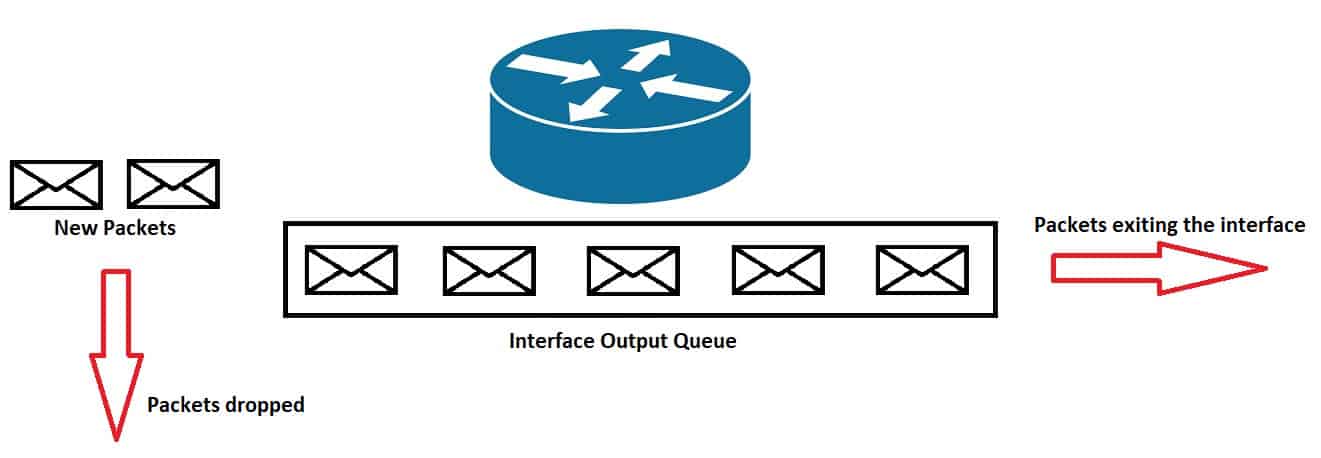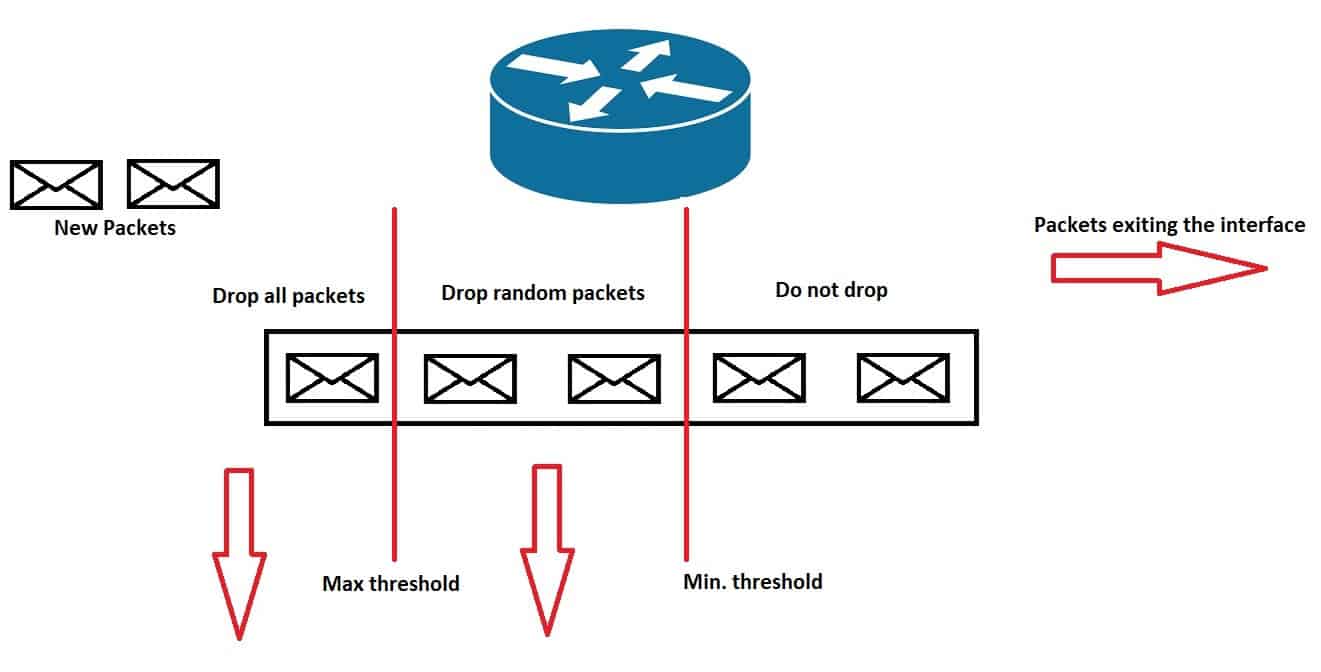Congestion Management or Congestion Avoidance is a QoS tool that seeks to improve network performance by reducing total packet loss and prematurely discarding some TCP packets. Network congestion occurs when a network (or a portion of the network) or a network node is overloaded with data.
Congestion avoidance strategies keep track of network traffic in order to predict and avoid network congestion problems at common bottlenecks. Packet dropping is a method of avoiding network congestion issues. Random Early Detection (RED), which is ideal for high-speed transit networks, is one of the more often utilized congestion avoidance strategies. When enabled, Cisco IOS QoS contains a RED implementation that regulates when the router dumps packets.
If you don’t enable Weighted Random Early Detection (WRED), the router falls back to the default packet drop mechanism called tail drop.
Causes of Network Congestion
Listed below are the most common causes of network congestion in a network:
Low bandwidth – Congestion occurs when the bandwidth is not large enough to accommodate all the traffic at the same time.
Poor network design – Your network topology must be designed not only to ensure that all parts of your network are connected but also to enhance performance across all coverage areas. Correct subnetting ensures that traffic flows towards the destined network and stays in that same network, which reduces congestion.
Outdated hardware – Bottlenecks can occur when data is transported through obsolete switches, routers, servers, and Internet exchanges. If the hardware isn’t up to par, a slowdown in data transmission occurs. Wire and cable connections as well must be in their optimal layout.
Too many devices in the broadcast domain – When you put too many hosts or multiple devices in a broadcast domain, you get a congested network.
Broadcast storms – Too many requests or broadcast traffic in a network.
High CPU utilization – Network devices are designed to handle a certain maximum data speed. Constantly pushing larger data would result in overutilized devices.
Congestion Avoidance
Congestion avoidance methods prevent network congestion by dropping packets. These methods include Tail Drop, Random Early Detection, and Weighted Random Early Detection.
Tail Drop
When WRED is not specified, this is the default congestion avoidance method. It treats all traffic equally and does not distinguish between service types. During moments of heavy traffic, queues form. When the output queue is full, packets are dropped until the traffic congestion is cleared and the queue is no longer full.
Random Early Detection (RED) and Weighted Random Early Detection (WRED)
We can utilize a method known as RED to boost overall throughput. Rather than waiting for the tail to drop, we keep an eye on the buffer or line depth. Random packets are discarded when the queue starts to fill up in order to slow down TCP.
Cisco’s WRED or “weighted” feature keeps track of the average queue depth. When the queue begins to fill, only a few random packets will be dropped. As the queue length grows longer, it becomes more aggressive, dropping even more random packets until it reaches a limit. All packets are dropped when this limit is reached.
With WRED, the packets to be dropped can be manually specified using traffic weights, which are indicated by IP Precedence (IPP) or DSCP. Packets with lower IPP values are dropped more than the packets with higher IPP values. The IP Explicit Congestion Notification (ECN) bits can be set using WRED. It signifies congestion during transit and will tell ECN-enabled endpoints to reduce packet transmission rates.
Download our Free CCNA Study Guide PDF for complete notes on all the CCNA 200-301 exam topics in one book.
We recommend the Cisco CCNA Gold Bootcamp as your main CCNA training course. It’s the highest rated Cisco course online with an average rating of 4.8 from over 30,000 public reviews and is the gold standard in CCNA training:


